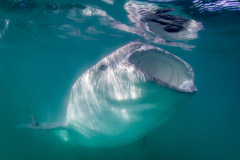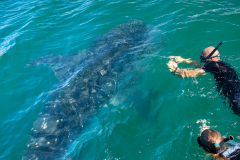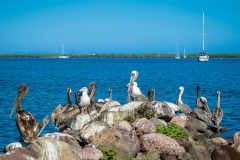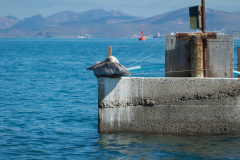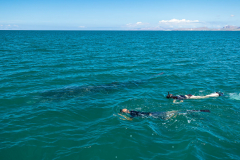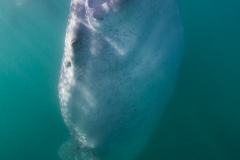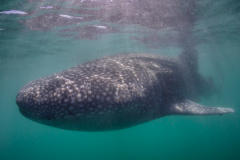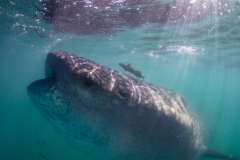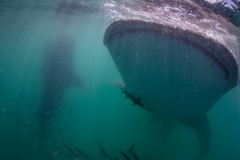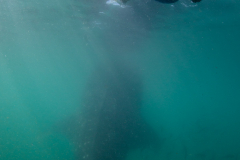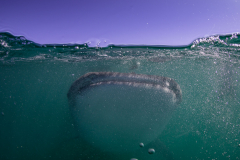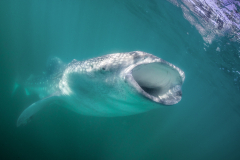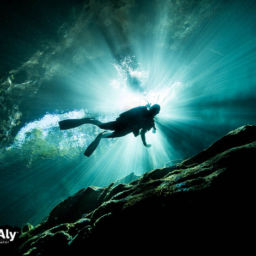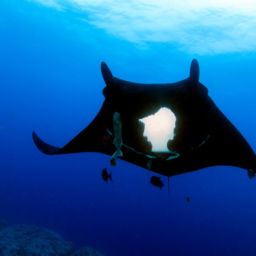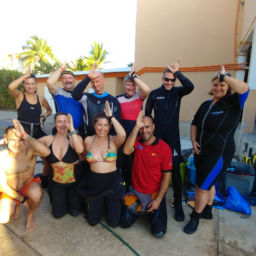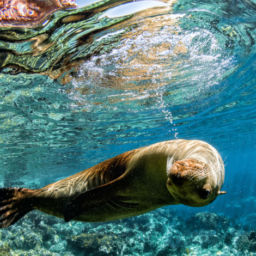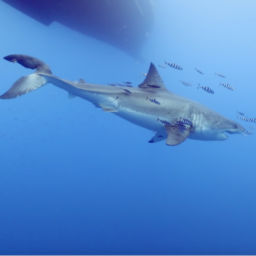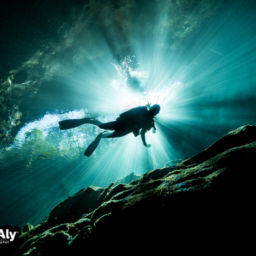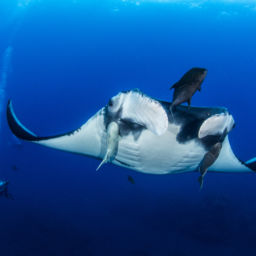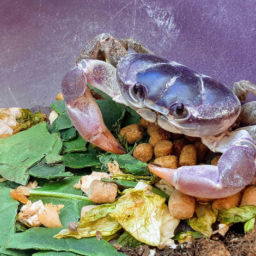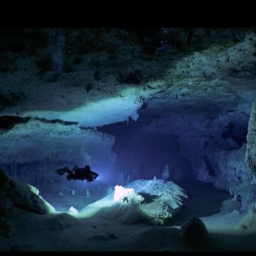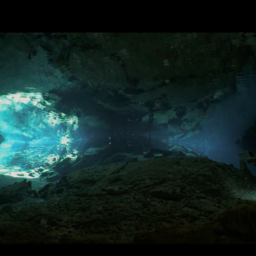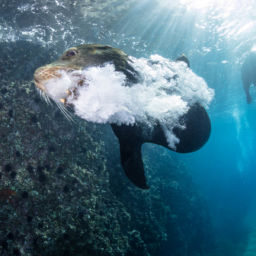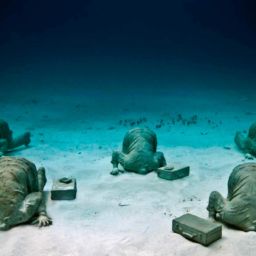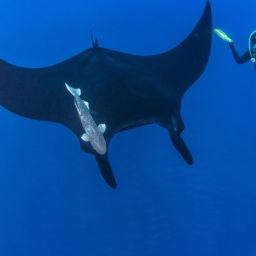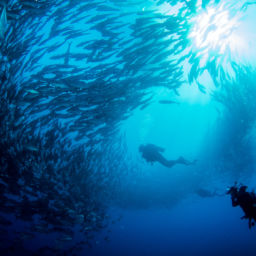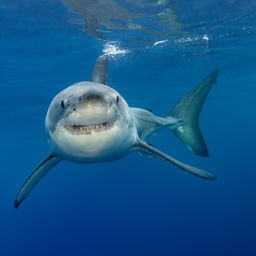La Paz is the state capital of Mexico’s Baja California Sur. It’s home to stunning, yet quiet, beaches where the water is often crystal-clear. It also lies on the Sea of Cortez, making it one of the world’s most biodiverse locations. However, the biggest draw — at least for divers — is the chance to swim with whale sharks in La Paz. The annual whale-shark population that takes up residence each fall in the city’s picturesque bay can number from the dozens to the hundreds.
Whale sharks are the largest fish in the sea, averaging 40 feet long (12 m) and weighing 20 tons, although some have been documented at over 55 ft (16 m) long and thought to be over 90 years old. Juveniles venture close to shore, filter-feeding on plankton, krill and other small invertebrates in the upper water column. In La Paz, scientists think that upwelling is the driving force bringing large amounts of small prey into the area. Unfortunately, the IUCN Red List has designated these creatures as an endangered species. However, a number of reputable small businesses and research organizations are dedicated to sustainable ecotourism in La Paz. They, along with the city, put the animals first.
Darren Whitehead, founder of La Paz’s Whale Shark Research Project, has been studying the impacts of ecotourism in La Paz as well as photographically identifying the sharks. Unlike most sharks, a whale shark’s unique pattern does not change as they mature. Thus, scientists can use their markings and spots to identify individuals in a non-invasive way. This data in turn helps them investigate population demographics within whale-shark communities and aggregation sites.
Whale sharks face several critical dangers, all of which are related to human development. These large fish feed in very shallow water, close to shore, putting them directly in the path of fishing boats, shipping vessels, and other boat traffic. Any of these can inadvertently collide with a whale shark if the skippers do not take proper precautions. The coastal areas hold large quantities of their food of choice, krill, and are also prime locations for coastal developments, which generate higher concentrations of water pollution. One of the biggest problems is plastic pollution, as small pieces of plastic look very similar to their translucent prey.
When to see them
The La Paz whale-shark season runs annually from October to May. During the opening months of the season, water temperatures can soar into the 80s F (26 C) and visibility can reach up to 60 feet (18 m), but aggregations tend to be small. As the season progresses into January, the water temperature drops to the low 60s (15 C), and small invertebrates crowd into the area. Although the invertebrates make for lower visibility, they bring in the largest numbers of whale sharks.
Interacting with the whale sharks is limited to snorkeling only. There are a number of reputable businesses and organizations offering snorkel tours. On the day of your trip, you will meet your boat at one of the many local marinas. It’s best to bring your own snorkel gear, a towel, and a waterproof camera to capture all of the exciting adventure ahead Once onboard, the boat ride is around 20 minutes to where the whale sharks congregate. Pro tip: 20 minutes is not a long boat ride, so make sure your camera equipment is ready for action before boarding the boat.
Tips for freediving with whale sharks
- Strong water skills are a must, as this activity requires several hours of snorkeling.
- Follow the captain’s directions. When it’s your turn, gently slip into the water to avoid disturbing the sharks.
- Remember not to touch the sharks, as the oils and bacteria from our skin can damage the protective mucous that surrounds their bodies.
- Use reef-friendly sunscreen or choose proper exposure protection and ditch the sunscreen for rash guards, dive skins, or other sun-protection clothing.
- No flash photography, so leave any strobes and video lights at home. Not only will this allow you to be more agile, but these lights can also disrupt whale-shark feeding patterns.
Frankie Grant is an internationally published marine photojournalist and PADI IDC Staff instructor, who enjoys nothing more that sharing his passion for the ocean with his students and peers. Throughout the year, Frankie conducts dive expeditions and imaging workshops both locally and abroad. You can see more of his work on his website or on Instagram.


